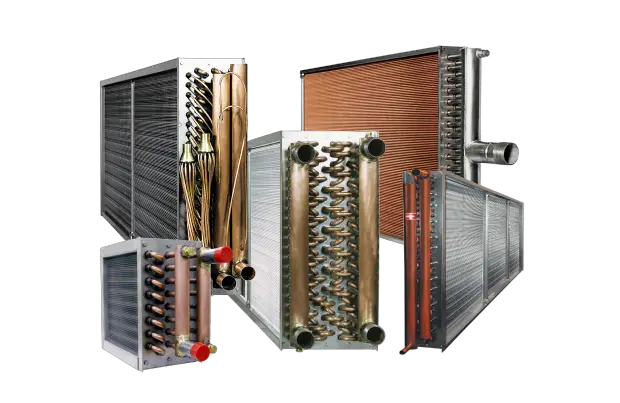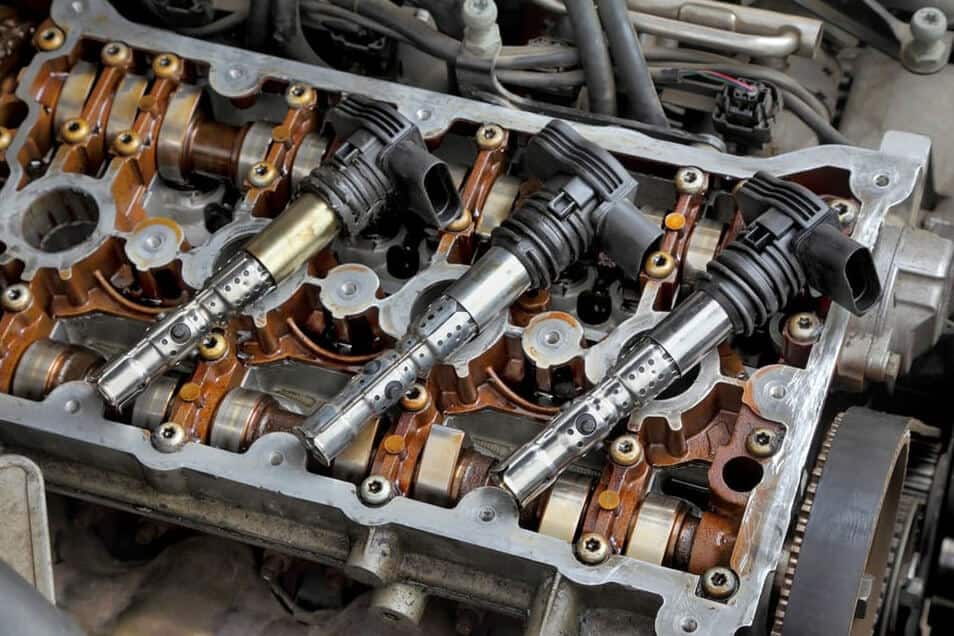The Complete Guide to Coil Replacements: Everything You Need to Know
In the world of industrial heat transfer equipment, coils play a crucial role in facilitating efficient heat exchange processes. These components, often found in various types of heat exchangers, are subject to wear and tear over time, necessitating regular maintenance and, eventually, coil replacements.

In the world of industrial heat transfer equipment, coils play a crucial role in facilitating efficient heat exchange processes. These components, often found in various types of heat exchangers, are subject to wear and tear over time, necessitating regular maintenance and, eventually, coil replacements. Replacing worn-out or damaged coils is essential to ensure optimal performance, energy efficiency, and longevity of the heat transfer system.
Understanding Coil Replacements

Coil replacements involve the process of removing the existing coil assembly from a heat exchanger and replacing it with a new or refurbished one. This process is typically undertaken when the existing coils have reached the end of their serviceable life or have sustained significant damage that compromises their heat transfer capabilities.
Coil replacements are a critical aspect of heat exchanger maintenance, as they help restore the equipment's performance, prevent further deterioration, and extend its operational lifespan. By addressing coil issues in a timely manner, industries can avoid costly breakdowns, production disruptions, and energy inefficiencies.
What is the primary purpose of coil replacements in heat transfer equipment?
The primary purpose of coil replacements is to restore the heat transfer capabilities and performance of the equipment by replacing worn-out or damaged coils, preventing further deterioration and extending the operational lifespan of the heat exchanger.
Reasons for Coil Replacements
There are several reasons why coil replacements may become necessary in heat transfer equipment:
- Fouling and scaling: Over time, deposits such as scale, corrosion products, or other contaminants can accumulate on the coil surfaces, reducing heat transfer efficiency and increasing pressure drop.
- Corrosion and erosion: Exposure to aggressive fluids, high temperatures, or abrasive particles can lead to coil corrosion and erosion, compromising the structural integrity of the coils.
- Mechanical damage: Coils can sustain mechanical damage due to factors such as vibration, impact, or improper handling during installation or maintenance.
- Age and thermal fatigue: Prolonged exposure to thermal cycling and high operating temperatures can cause coils to degrade over time, leading to material fatigue and eventual failure.
What is a common reason that may necessitate coil replacements in heat transfer equipment?
A common reason that may necessitate coil replacements is fouling and scaling, where deposits accumulate on the coil surfaces, reducing heat transfer efficiency and increasing pressure drop.

Types of Coil Replacements
Coil replacements can be categorized into two main types: complete coil bundle replacements and individual coil replacements.
- Complete coil bundle replacements: In this type of replacement, the entire coil bundle, consisting of multiple coils and associated components, is removed and replaced with a new or refurbished bundle. This approach is often preferred when a significant portion of the coils in the bundle requires replacement or when the bundle has reached the end of its service life.
- Individual coil replacements: In some cases, only a few coils within the bundle may need replacement. Individual coil replacements involve removing and replacing the damaged or worn-out coils while leaving the remaining coils in place. This approach can be more cost-effective and time-efficient when only a small number of coils require attention.
What are the two main types of coil replacements in heat transfer equipment?
The two main types of coil replacements are complete coil bundle replacements, where the entire coil bundle is replaced, and individual coil replacements, where only specific damaged or worn-out coils within the bundle are replaced.
Coil Replacement Process
The coil replacement process typically involves several steps to ensure a successful and efficient installation:
- Preparation: The heat exchanger is shut down, and appropriate safety measures are taken, such as isolating the equipment, depressurizing, and draining any remaining fluids.
- Disassembly: The heat exchanger is disassembled to access the coil bundle or individual coils requiring replacement. This may involve removing end covers, tube sheets, or other components.
- Removal: The old coil bundle or individual coils are carefully removed, taking note of any specific installation requirements or potential challenges.
- Inspection: The heat exchanger shell, tube sheets, and other components are inspected for any additional damage or wear that may need to be addressed.
- Installation: The new coil bundle or individual coils are installed following the manufacturer's instructions and industry best practices.
- Reassembly: The heat exchanger is reassembled, with any necessary gaskets, seals, or other components replaced to ensure proper sealing and integrity.
- Testing and commissioning: Once reassembled, the heat exchanger is tested, leak-checked, and commissioned to ensure proper operation before being returned to service.
What is one of the steps involved in the coil replacement process for heat transfer equipment?
One of the steps involved in the coil replacement process is the inspection of the heat exchanger shell, tube sheets, and other components for any additional damage or wear that may need to be addressed before installing the new coil bundle or individual coils.

Coil Selection and Specifications
Selecting the appropriate coil replacement is crucial to ensure optimal performance and compatibility with the existing heat exchanger design. Several factors need to be considered when specifying new coils:
- Material compatibility: The coil material must be compatible with the fluids being processed and the operating conditions, such as temperature, pressure, and corrosive environments.
- Thermal performance requirements: The coil design, including fin geometry and tube patterns, should be selected to meet the desired heat transfer rates and pressure drop specifications.
- Dimensional requirements: The new coils must fit within the existing heat exchanger shell and tube sheet configurations, ensuring proper installation and sealing.
- Regulatory compliance: Coil materials and designs may need to comply with industry standards, codes, and regulations specific to the application or location.
Working closely with coil manufacturers or heat exchanger experts can help ensure that the correct coil specifications are selected, optimizing performance and avoiding compatibility issues.
Maintenance and Prevention
While coil replacements are inevitable over the lifespan of heat transfer equipment, proper maintenance and preventive measures can extend the service life of coils and minimize the frequency of replacements. Some recommended practices include:
- Regular cleaning and descaling: Implementing effective cleaning and descaling programs to remove fouling and scale buildup on coil surfaces.
- Water treatment: Treating and monitoring the quality of process fluids to minimize corrosion, scaling, and fouling potential.
- Monitoring and inspection: Regularly monitoring operating parameters and conducting visual inspections to identify potential coil issues early.
- Operator training: Providing proper training to operators on equipment handling, startup, shutdown, and maintenance procedures to prevent accidental damage.
By following best practices for maintenance and prevention, industries can maximize the operational lifespan of their coils and minimize the need for frequent replacements.

Conclusion
Coil replacements are an integral part of maintaining efficient and reliable heat transfer equipment in various industrial processes. By understanding the reasons for coil replacements, the different types available, and the proper replacement procedures, industries can ensure optimal performance and extend the lifespan of their heat exchangers. From complete coil bundle replacements to individual coil replacements, the choice depends on the extent of damage or wear, as well as cost and time considerations. Selecting the appropriate coil specifications, considering factors such as material compatibility, thermal performance requirements, and dimensional constraints, is crucial for ensuring seamless integration and optimal heat transfer capabilities. Regular maintenance, effective cleaning and descaling programs, water treatment, and operator training are key preventive measures that can minimize the need for frequent coil replacements and maximize the operational lifespan of the equipment. By embracing best practices and staying proactive in coil maintenance and replacement, industries can achieve greater energy efficiency, reduce downtime, and maintain a competitive edge in their respective markets.
What's Your Reaction?

















